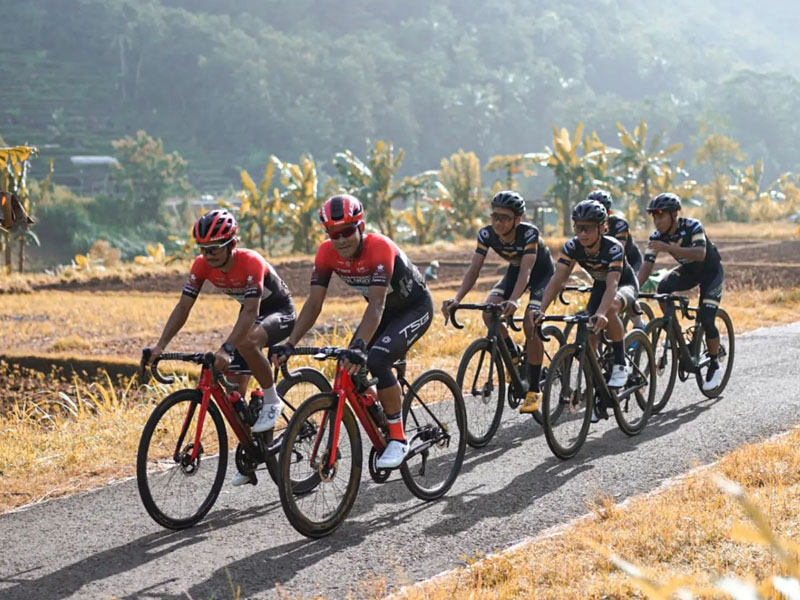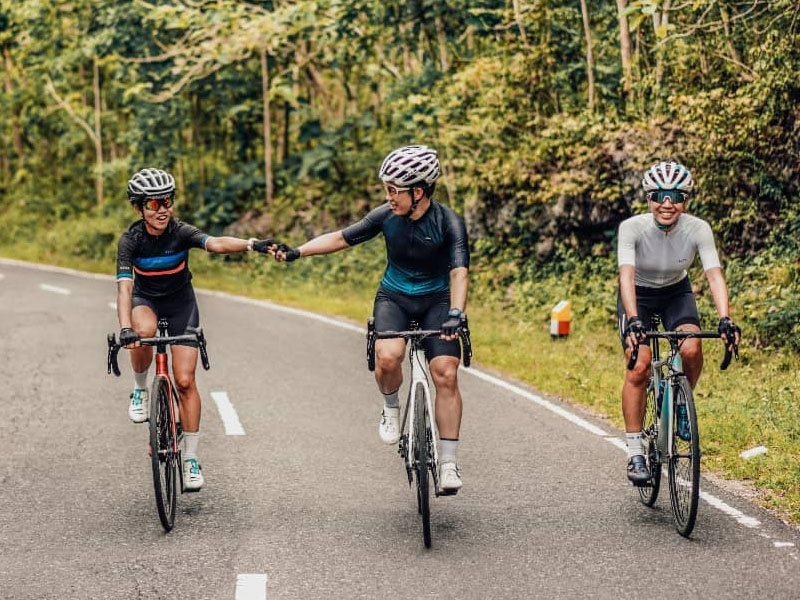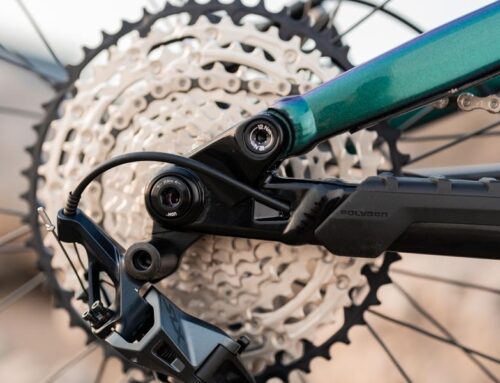Group cycling can be a thrilling and rewarding experience as it allows you to push yourself to new limits and enjoy the companionship of fellow cyclists. However, it’s crucial to remember that group cycling requires effective communication and coordination to keep everyone safe and on track. In this article, we’ll discuss some important tips that every group cyclist should know, so you can stay safe and make the most of your group cycling adventures.
1. Formation
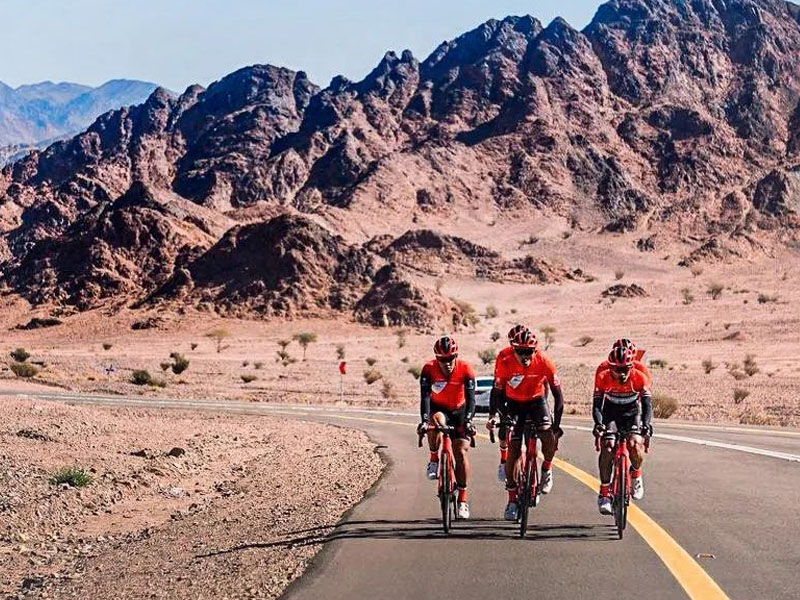
Cycling formation you choose can make a significant difference in safety and efficiency. The most common formation is the double paceline, where two lines of riders cycle side-by-side. The front rider of each line takes turns leading the group, while the rest of the riders follow closely behind.
This formation is beneficial because it minimizes wind resistance and allows riders to take turns leading, reducing fatigue. However, switching leaders and maintaining a consistent speed requires coordination and communication.
Ensure that everyone in the group has a chance to lead and avoid burnout, leaders are ideally changed every (around) 5-10 minutes. This allows for a fair distribution of effort and keeps the pace steady. Communication is key during these transitions, with the outgoing leader signaling to the incoming leader to take over. It’s also important for the group to establish clear hand signals and verbal cues to communicate hazards or changes in direction to avoid accidents.
2. Communication
Roads are shared with many other users, including pedestrians, motorists, other cyclists, and even bigger vehicles. So all members of the group need to be aware of their surroundings and potential hazards. Leaders should constantly point out any hazards, such as potholes, debris, or oncoming traffic.
Establishing clear pre-riding communication is essential before starting a ride. This includes relaying important information to the last person in the pack, such as hand signals and verbal cues for turning, slowing down, or stopping. This helps prevent accidents and ensures that everyone stays together.
In addition, it’s crucial to inform the group if your bike experiences any mechanical problems. This way, the group can stop and assess the situation, offer assistance, or make necessary repairs. Failing to communicate a mechanical issue can result in safety hazards for yourself and others in the group.
Read deeper: Cycling Communication: 3 Essential Hand Signals to Know
3. Speed
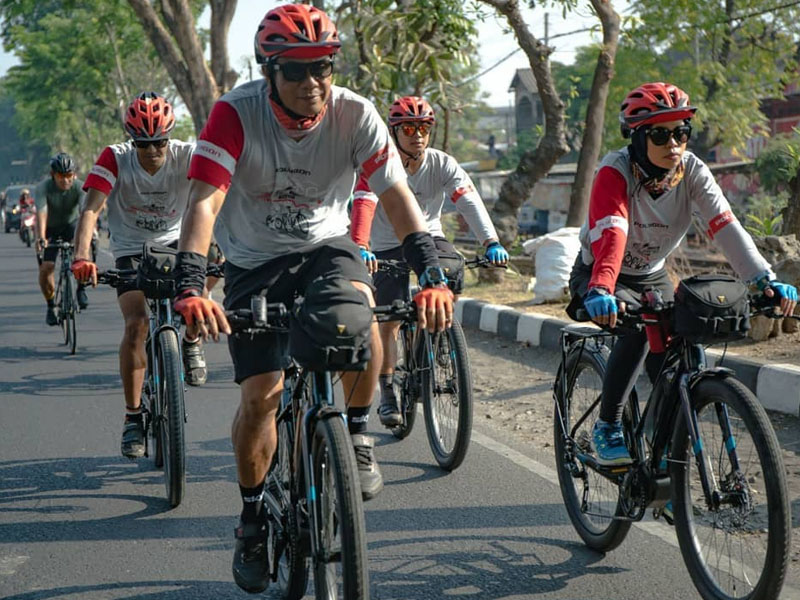
Maintaining a consistent speed during group rides is crucial for everyone’s safety and enjoyment. The group should establish a comfortable and manageable pace that allows all members to keep up. If someone is struggling to maintain the pace, the group should slow down or take breaks as needed.
It’s important to communicate any changes in pace to the rest of the group, especially when approaching hills or headwinds. Leaders should also keep an eye on the track and adjust the pace accordingly to maintain safety.
Before starting a ride, it’s essential to agree on the type of ride and expected speed level of all members of the group. This will help riders determine if the ride is suitable for their ability level and equipment. It’s also important to establish a plan for regrouping in case the group gets separated due to differing speeds.
During the ride, the leader should periodically check in with the group to ensure that the pace is comfortable for everyone. If someone is struggling, the group should slow down and regroup. It’s also important to be aware of any traffic laws or regulations that may impact the group’s speed.
Protect Your Eyes During Speeds
4. Etiquette
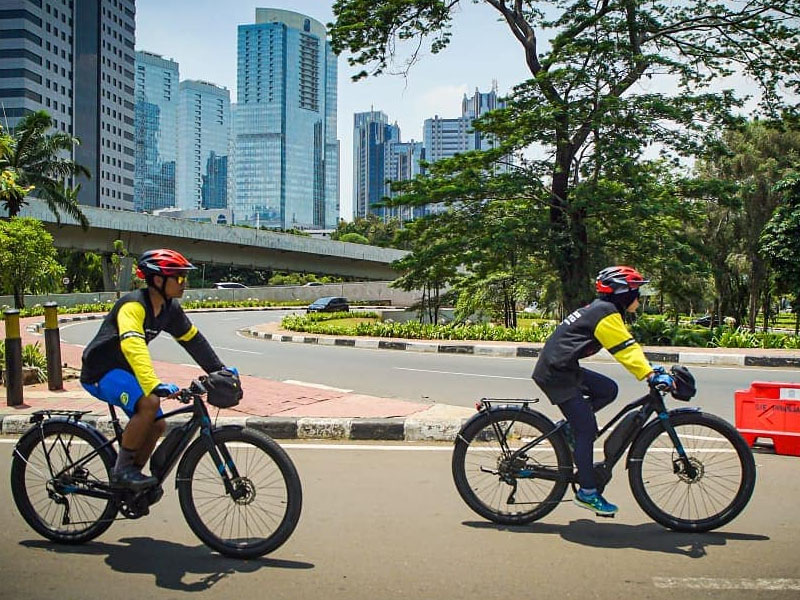
Riding in a group requires not only technical skills but also good etiquette to ensure everyone’s safety and enjoyment. Here are some essential tips to follow:
- Passing by communication to the last person in the pack: It’s crucial to communicate your intentions to the last person in the pack. This can be done through verbal cues, hand signals, or a combination of both. The last person then relays the message to the rider in front of them, and so on.
- Stinky and Smelly kit: It’s essential to ensure that your riding kit is clean and odour-free before joining a group ride. This not only makes the ride more pleasant for everyone but also helps prevent the spread of germs and bacteria. If you’re unsure about the cleanliness of your kit, it’s best to wash it before the ride.
Also Read: Easy Guide on How to Wash a Bike Helmet for Comfortable Ride
- Clearing nose/spitting: While it’s important to maintain good hygiene, clearing your nose or spitting during a group ride can be considered impolite. If you need to do so, move to the back of the pack or the side of the road and make sure no one is close behind you.
- Steady breaking: Sudden and frequent braking can be dangerous for everyone in the group. To avoid accidents, try to maintain a steady pace and use gradual braking when needed. It’s also important to keep a safe distance between you and the rider in front of you to allow for sudden stops or swerves.
Remember that good etiquette not only promotes a safe and enjoyable ride but also reflects positively on the cycling community as a whole.
Conclusion
Cycling in group can be a fantastic way to stay active and enjoy the outdoors with others. However, it’s crucial to approach group cycling with caution and responsibility. By practising effective communication, coordination, and etiquette, you can ensure that your group cycling experience is both safe and enjoyable. So grab your bike, join a group, and hit the road with your favourite community!
You might also think about joining the Rodalink community to receive better discounts and offers. Rodalink can be your dependable cycling partner as you live out your adventurous riding dream.
